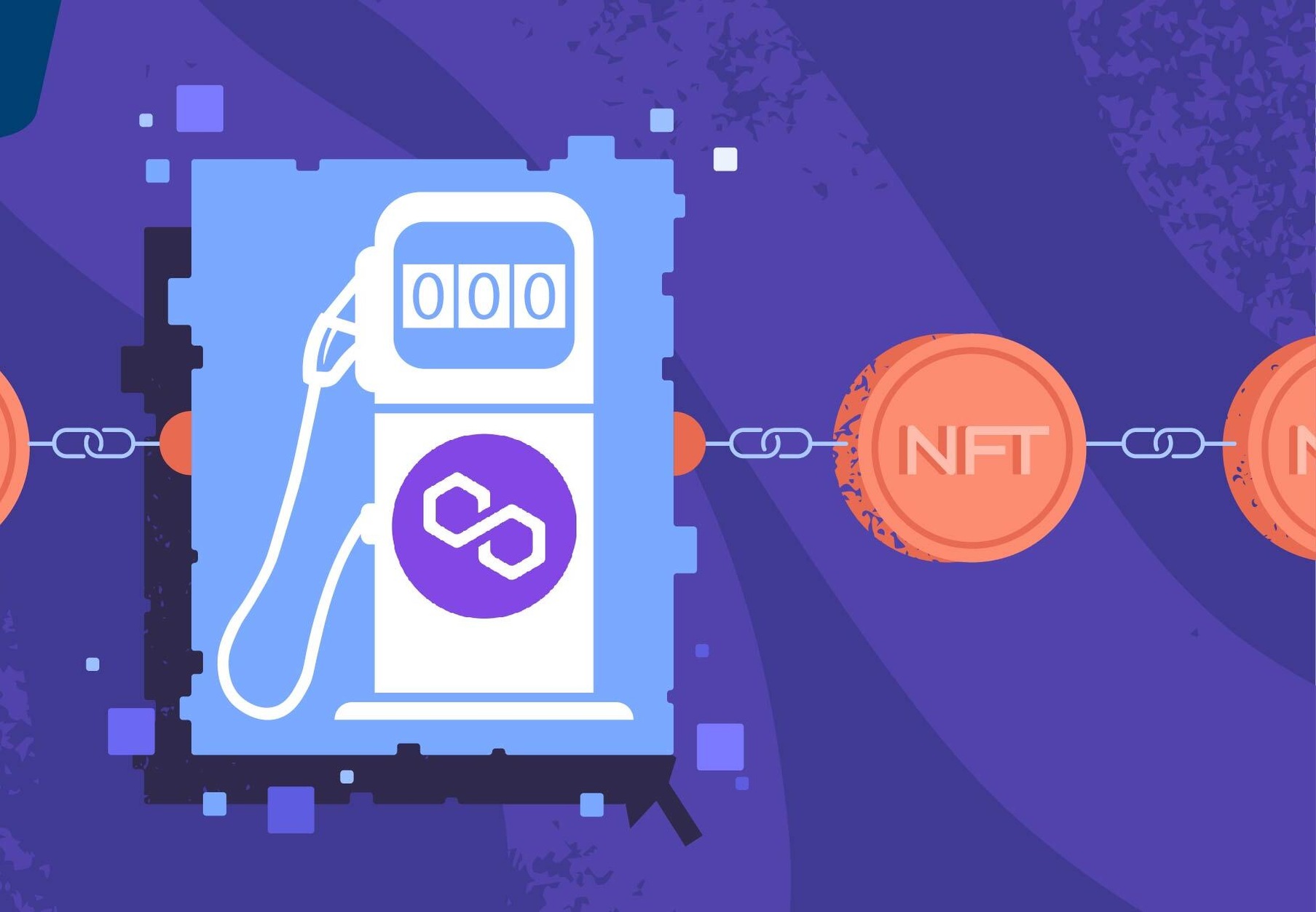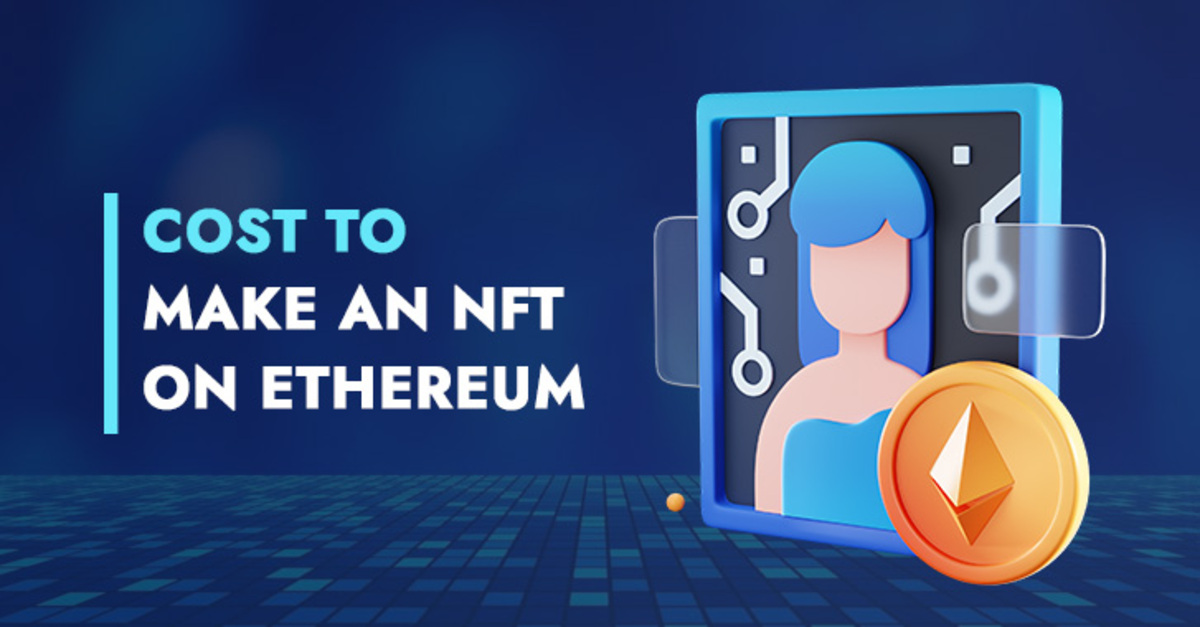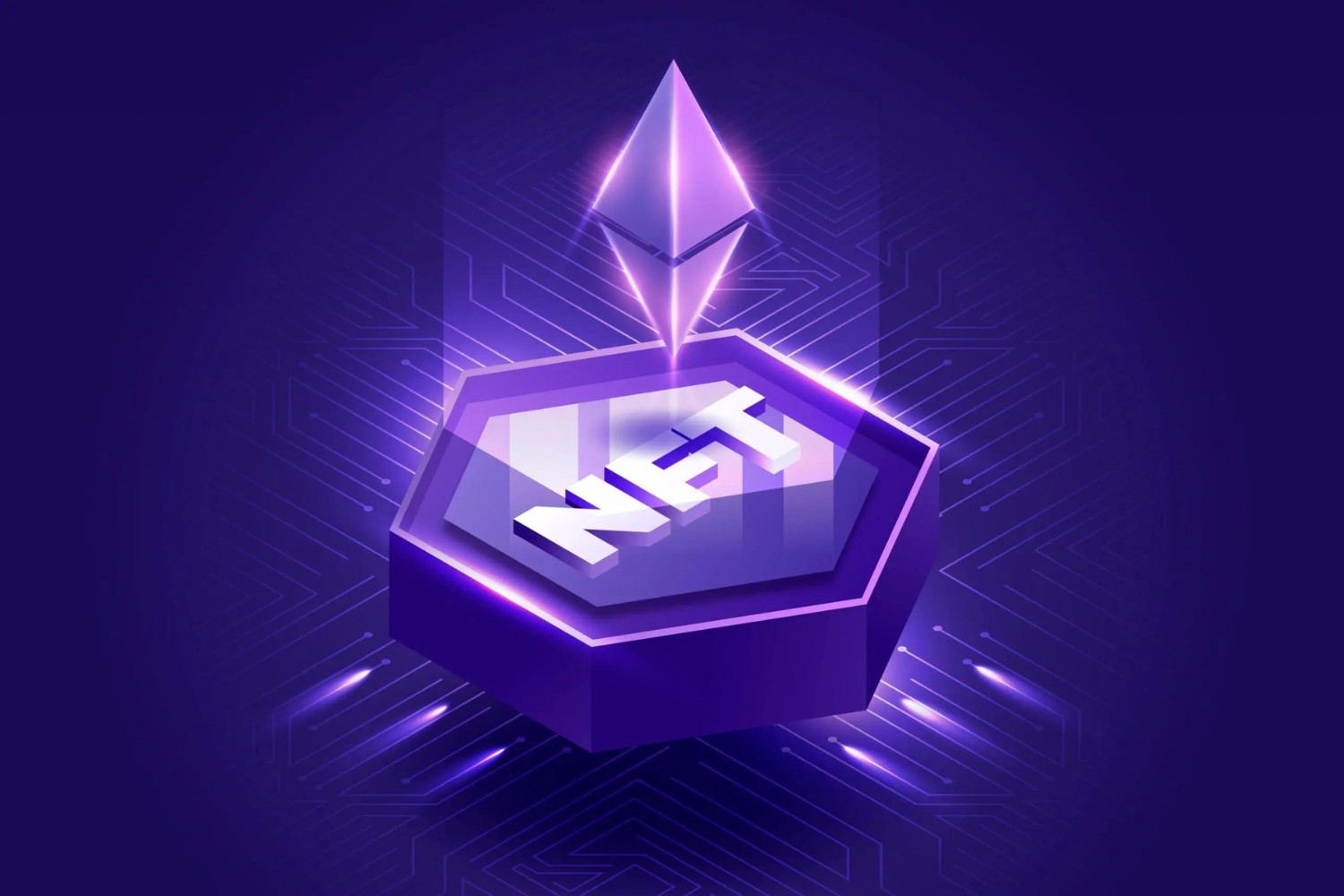What are NFT Gas Fees?
NFT gas fees are the transaction fees required for minting, buying, selling, or transferring non-fungible tokens (NFTs) on blockchain platforms. Gas fees are a crucial aspect of blockchain networks, including Ethereum, which is commonly used for NFT transactions.
When any action is performed on the blockchain, such as minting an NFT or transferring ownership, it requires computational power and resources from the network. These resources are provided by miners, who validate and bundle transactions into blocks.
Gas fees are the fees paid to the miners for their efforts in carrying out these computational tasks. They are measured in small fractions of the cryptocurrency used on the network, such as Ether (ETH) in the case of Ethereum.
The concept of gas fees is similar to paying a transaction fee when using traditional banking systems or payment processors. However, with blockchain networks, gas fees are used to incentivize miners to process transactions and maintain the security of the network.
The amount of gas fees required for an NFT transaction is determined by several factors, including the complexity of the transaction, network congestion, and the gas price set by the user. Higher gas prices increase the chances of the transaction being processed quickly but also incur higher fees.
It’s important to note that while gas fees are a necessary aspect of NFT transactions, they can vary greatly depending on the network and the specific platform you are using to interact with NFTs. Therefore, understanding how gas fees are calculated and exploring strategies to minimize them is essential for NFT collectors, creators, and traders.
How are NFT Gas Fees Calculated?
NFT gas fees are calculated based on a few key factors, including the complexity of the transaction and the current network congestion. To better understand how gas fees are determined, let’s explore the process in more detail.
1. Gas Price: The gas price refers to the amount of cryptocurrency (usually Ether) you are willing to pay per unit of gas. It is measured in “gwei,” which is equivalent to one billionth of an Ether. The higher the gas price, the more likely miners will prioritize your transaction. However, higher gas prices also mean higher fees.
2. Gas Limit: The gas limit is the maximum amount of gas you are willing to use for a transaction. Each computational task within the transaction requires a specific amount of gas. If the gas limit is set too low, the transaction may fail. On the other hand, setting a high gas limit can result in unnecessary fees.
3. Transaction Complexity: The complexity of the transaction affects the gas fees. Performing actions such as minting an NFT, transferring ownership, or executing a smart contract requires more computational resources and thus incurs higher gas fees.
4. Network Congestion: When the Ethereum network experiences high demand and congestion, gas fees tend to increase. The limited capacity of the network can lead to delays in transaction processing, and users may need to compete by setting higher gas prices to ensure their transactions are prioritized.
Calculating gas fees can be a complex process, but there are tools and calculators available to estimate the approximate gas fees for NFT transactions before executing them. These tools take into account the current gas price and gas limit, allowing users to make informed decisions about their transactions.
It’s important to note that gas fees can fluctuate from one transaction to another and from one network to another. Different blockchain platforms may have their own gas fee structures and calculations, so it’s crucial to be aware of the specific requirements of the platform you are using for NFT transactions.
By understanding how gas fees are calculated and staying informed about the current network conditions, NFT participants can make informed decisions and budget accordingly for their transactions.
Factors that Affect NFT Gas Fees
Several factors can influence the amount of gas fees associated with NFT transactions. Understanding these factors is essential for effectively managing and optimizing the costs involved. Let’s explore the key factors that can impact NFT gas fees:
1. Network Congestion: The level of network congestion on the blockchain platform can significantly influence gas fees. When the number of pending transactions exceeds the network’s capacity, users may need to set higher gas prices to ensure their transactions are processed promptly. During peak periods, such as when highly anticipated NFT drops occur, gas fees can increase substantially.
2. Gas Price: The gas price or the amount of cryptocurrency (typically Ether) you are willing to pay per unit of gas directly affects the gas fees. Setting a higher gas price increases the probability of your transaction being prioritized by miners, but it also results in higher fees. Conversely, setting a lower gas price might lead to slower transaction processing or even failure if other users are willing to pay higher fees.
3. Transaction Complexity: The complexity of the NFT transaction plays a role in determining the gas fees. more complex operations, such as executing smart contracts or interacting with decentralized applications (dApps), require additional computational resources. As a result, they tend to incur higher gas fees compared to simpler actions like transferring ownership or minting a basic NFT.
4. Gas Limit: The gas limit represents the maximum amount of gas you are willing to allocate for a specific transaction. If the gas limit is set too low, the transaction may fail to execute, resulting in wasted fees. Conversely, setting a high gas limit can lead to unnecessary expenses. It’s crucial to find the right balance by estimating the gas required for a particular transaction accurately.
5. Blockchain Platform: Different blockchain platforms have their own gas fee structures and payment mechanisms. Ethereum, being the most popular blockchain for NFTs, typically incurs higher gas fees due to its network congestion and demand. However, other blockchain platforms like Binance Smart Chain or Flow may offer lower gas fees as alternatives.
Considering these factors allows NFT participants to have a better understanding of the potential gas fees associated with their transactions. By monitoring network congestion, setting an appropriate gas price and limit, and exploring alternative blockchain platforms, users can successfully navigate the complexities of gas fees and optimize their NFT experiences.
Common Misconceptions about NFT Gas Fees
As the popularity of NFTs continues to grow, there are several misconceptions and misunderstandings surrounding gas fees. Let’s debunk some common misconceptions and provide clarity on this topic:
1. Gas fees are arbitrary charges set by platforms: Gas fees are not arbitrary charges set by NFT platforms. They are determined by the underlying blockchain network, such as Ethereum. Gas fees exist to incentivize miners to validate and process transactions on the decentralized network.
2. Gas fees are purely profit for platforms: Gas fees do not solely benefit NFT platforms or marketplaces. The fees go directly to the miners who provide the computational power to process transactions on the blockchain. Platforms themselves usually do not retain any portion of the gas fees.
3. Gas fees will remain high indefinitely: While gas fees on popular networks like Ethereum have been high, they are not fixed and can fluctuate depending on various factors. As scalability solutions and upgrades are implemented, like Ethereum 2.0 and Layer 2 solutions, gas fees are expected to improve over time.
4. Only the rich can afford NFT gas fees: High gas fees may create the perception that only wealthy individuals can participate in NFTs. However, there are various strategies to minimize gas fees, such as using alternative blockchain platforms with lower fees, optimizing gas price and limit settings, and participating in off-peak hours when network congestion is lower.
5. Gas fees are the same across all NFT transactions: Gas fees are not standardized across all NFT transactions. Each transaction has its own gas fee, which depends on factors like transaction complexity, gas price, and network conditions. Minting an NFT or executing a complex smart contract may incur higher fees compared to a simple transfer of ownership.
6. Paying higher gas fees guarantees faster transactions: While paying a higher gas price increases the chances of a transaction being prioritized by miners, it is not a guarantee of instant or faster processing. Network congestion and other factors can still cause delays. Gas fees should be set according to the desired transaction priority and individual preferences.
It is important to have a clear understanding of these misconceptions to make informed decisions when participating in the NFT space. By knowing the true nature of gas fees and exploring strategies to mitigate their impact, individuals can engage with NFTs in a more cost-effective and efficient manner.
Strategies to Minimize NFT Gas Fees
Gas fees can significantly impact the cost of NFT transactions, but there are strategies you can employ to minimize these fees. By following these strategies, you can optimize your transactions and save on unnecessary expenses. Here are some key approaches to consider:
1. Choose the Right Time: Gas fees can fluctuate depending on network congestion. Consider conducting your NFT transactions during off-peak hours when network demand is lower. This can potentially reduce the gas fees associated with your transactions.
2. Gas Price Research: Before submitting a transaction, research the current gas prices in the network. Platforms and tools like gas price trackers can provide real-time data on gas prices. By setting a reasonable and competitive gas price, you can strike a balance between transaction prioritization and cost-effectiveness.
3. Optimize Gas Limit: Carefully determine the gas limit for your transactions. Setting a higher gas limit than necessary can result in unnecessary fees. By estimating the required gas for a specific action accurately, you can provide enough gas for the transaction to be successful while minimizing costs.
4. Batch Transactions: Consider batching multiple NFT transactions into a single transaction. Instead of performing individual transactions, you can combine multiple actions into a single smart contract interaction. This approach reduces the overall gas fees since you’re paying for a single transaction instead of multiple separate transactions.
5. Utilize Layer 2 Solutions: Layer 2 solutions, such as sidechains or off-chain protocols, offer scaling mechanisms that can significantly reduce gas fees. These solutions enable faster and cheaper transactions by processing them off the main Ethereum network. Explore NFT marketplaces and platforms that operate on Layer 2 solutions to take advantage of their cost-saving benefits.
6. Explore Alternative Blockchains: Ethereum is the most popular blockchain for NFTs, but it’s not the only option. Consider exploring alternative blockchain platforms, such as Binance Smart Chain or Flow, which may have lower gas fees. However, keep in mind that each platform has its own unique features and ecosystem, so you need to research and understand their differences before participating.
By implementing these strategies, you can minimize the impact of gas fees on your NFT transactions. Keep in mind that gas fees are dynamic and can vary based on network conditions, so it’s essential to stay informed and adapt your strategies accordingly.
Tips for Navigating High NFT Gas Fees
Dealing with high gas fees can be challenging when participating in the NFT space. However, there are several tips and techniques that can help you navigate and mitigate the impact of these fees. Consider the following strategies when faced with high NFT gas fees:
1. Evaluate the Worth: Before proceeding with a transaction, carefully assess the potential value and profitability of the NFT. Determine if the gas fees are justifiable based on the expected returns or benefits. This evaluation can prevent unnecessary expenses on transactions that may not yield significant value.
2. Plan Ahead: Take time to plan your transactions in advance. Monitor the gas fees over time and wait for periods when fees are relatively lower before executing your transactions. Patience can be rewarding when it comes to saving on gas fees.
3. Set Realistic Expectations: Understand that gas fees may fluctuate and that they are an inherent part of blockchain networks. Adjust your expectations accordingly and factor in gas fees when budgeting for NFT acquisitions, sales, or other transactions.
4. Consider Bundled Transactions: Bundle multiple NFT transactions into a single transaction if possible. By grouping transactions together, you can save on gas fees, as you only pay the fee for a single transaction instead of multiple individual ones. However, keep in mind that the gas limit should be set appropriately to accommodate all the actions within the bundled transaction.
5. Leverage Gas Price Optimization Tools: Utilize gas price optimization tools or Ethereum wallets that offer gas fee estimation features. These tools can provide insights on the current gas prices and help you set the most appropriate gas price for your transactions, optimizing cost-efficiency.
6. Explore Layer 2 Solutions: Layer 2 scaling solutions, such as Optimistic Rollups or Plasma, can significantly reduce gas fees by processing transactions off-chain or on secondary networks. Look for NFT marketplaces or platforms that leverage Layer 2 solutions to take advantage of reduced gas fees and improved transaction efficiency.
7. Research Alternative Blockchains: Consider exploring NFT platforms on alternative blockchain networks that offer lower gas fees. Networks like Binance Smart Chain, Flow, or Polygon (formerly Matic) have gained popularity for their relatively lower gas fees compared to Ethereum. Research these platforms and verify their compatibility with your preferred NFT tokens or collections.
Remember, high gas fees are a temporary challenge, and ongoing developments in blockchain technology aim to address scalability and reduce fees over time. By applying these tips and staying informed about the latest advancements in the space, you can navigate high gas fees more effectively and make the most out of your NFT transactions.
How to Estimate NFT Gas Fees Before Minting
Estimating NFT gas fees before minting is crucial to manage costs and make informed decisions. While exact gas fee calculations can be challenging due to the dynamic nature of blockchain networks, there are strategies you can employ to estimate gas fees more effectively. Consider the following steps:
1. Gas Fee Estimation Tools: Utilize gas fee estimation tools and platforms that provide real-time gas price information. These tools analyze historical data and network conditions to give you an estimate of the gas fees you can expect to pay. Some popular options include Etherscan, GasNow, and GasTracker.
2. Gas Price Research: Research the current gas prices in the network using reliable sources. This can involve monitoring gas price charts, historical data, and gas price indexes. By understanding the average and standard deviation of gas prices, you can set a reasonable gas price for your transaction.
3. Transaction Complexity: The complexity of the NFT minting process can impact gas fees. Evaluate the steps and computational requirements involved in the minting process. More intricate operations, such as generating unique attributes or executing complex smart contracts, tend to require higher gas fees than simple minting processes.
4. Evaluate Similar NFTs: Look for similar NFT projects or collections that have already been minted. Analyze the gas fees paid by those projects, especially for similar transaction types, to get a general idea of the gas fees you might encounter. This information can serve as a benchmark for estimating your own gas fees.
5. Test with Small Batches: Before minting a large number of NFTs, consider conducting small batch tests. Mint a few tokens and monitor the gas fees associated with the transactions. This can help you gauge the average fee and extrapolate the estimated fees for larger minting quantities.
6. Consult with the Platform: Reach out to the NFT minting platform or marketplace you plan to use. They may have specific guidelines or estimates on gas fees for minting NFTs on their platform. Platforms that offer gas fee estimators or calculators can be particularly helpful in estimating fees accurately.
Keep in mind that gas fees can still vary and are subject to change due to network congestion or other factors. It’s essential to factor in a buffer and budget a slightly higher amount than the estimated gas fees to accommodate potential fluctuations.
By following these steps and leveraging available tools and resources, you can make more informed decisions regarding gas fees before minting your NFTs. This knowledge allows you to plan your budget effectively and optimize your minting process on the blockchain network.
Comparison of NFT Gas Fees on Different Platforms
NFT gas fees can vary significantly depending on the blockchain platform you choose for your transactions. Understanding the differences in gas fees among various platforms can help you choose the most cost-effective option for your NFT activities. Let’s compare the gas fees on different platforms:
1. Ethereum: Ethereum is the most popular blockchain platform for NFTs, but it is known for its high gas fees, especially during times of network congestion. Gas fees on Ethereum can vary greatly depending on the complexity of the transaction and network conditions. Minting or interacting with NFTs on Ethereum can be costly due to the platform’s popularity and limited scalability.
2. Binance Smart Chain (BSC): Binance Smart Chain is an alternative blockchain platform that offers lower gas fees compared to Ethereum. It has gained popularity as a more cost-effective option for NFT transactions. The gas fees on BSC are typically lower due to its different consensus mechanism and higher transaction capacity. NFTs minted or traded on BSC often incur significantly lower gas fees compared to Ethereum.
3. Flow: Flow is a blockchain platform specifically designed for NFTs and digital collectibles. Its gas fees are relatively lower compared to Ethereum, providing greater accessibility for NFT creators and collectors. Flow uses a different architecture and resource allocation system, allowing for more efficient transaction processing and lower gas fees for NFT-related activities.
4. Polygon: Polygon (formerly Matic) is a Layer 2 scaling solution built on top of Ethereum. It offers faster and cheaper transactions by utilizing sidechains and off-chain computation. NFT projects and marketplaces on Polygon benefit from significantly lower gas fees compared to Ethereum. Minting and trading NFTs on Polygon can be a more cost-effective alternative while benefiting from the security and ecosystem of Ethereum.
5. Tezos: Tezos is a blockchain platform that aims to provide secure and scalable solutions for NFTs. It offers relatively low gas fees compared to Ethereum and provides developers with a flexible smart contract platform. NFT projects utilizing Tezos as their blockchain often experience more affordable gas fees and improved scalability for their transactions.
It’s important to note that the gas fees mentioned above are based on general trends and can fluctuate depending on network congestion and transaction complexity. The fees also depend on the specific project or marketplace you interact with on each platform. Always research and compare the gas fees on the specific platforms you plan to use for your NFT activities.
Considering the differences in gas fees among these platforms, you can decide which one aligns better with your budget and transaction needs. Exploring alternative platforms can provide cost savings and a smoother experience for minting, trading, and collecting NFTs.
Why Are NFT Gas Fees So High?
NFT gas fees, particularly on platforms like Ethereum, are known to be high and can significantly impact the cost of NFT transactions. Several factors contribute to the high gas fees in the NFT ecosystem:
1. Network Congestion: Blockchain networks, like Ethereum, have a limited transaction capacity. During times of high demand and network congestion, the number of pending transactions exceeds this capacity. Miners prioritize transactions with higher gas fees, resulting in increased competition and higher fees to ensure transactions are processed promptly.
2. Complex Smart Contracts: NFTs sometimes involve interaction with intricate smart contracts. Executing complex logic requires more computational resources, leading to higher gas fees. The complexity of these smart contracts can be attributed to the various functionalities and features they offer, such as royalty distribution, auctions, and verifiable scarcity.
3. Limited Scalability: Some blockchain networks, including Ethereum, face scalability challenges, especially when it comes to handling a high volume of transactions. The limited scalability increases the demand for block space, as users compete for a limited number of transaction slots. This competition drives up the gas fees as users bid higher to have their transactions included in the next block.
4. Proof-of-Work Consensus: Ethereum currently employs a Proof-of-Work (PoW) consensus mechanism, which requires miners to solve complex mathematical puzzles to validate transactions and add them to the blockchain. The energy-intensive nature of PoW mining incentivizes miners to prioritize transactions with higher fees, leading to increased gas fees.
5. Network Security: Gas fees play a crucial role in maintaining the security and integrity of blockchain networks. The fees incentivize miners to validate transactions and prevent spam or malicious activities on the network. Higher gas fees ensure that only serious participants have access to network resources, adding a layer of security to the blockchain.
It’s important to note that despite the high gas fees, there are ongoing developments and upgrades in the blockchain space to address scalability issues and reduce fees. Ethereum 2.0, for example, aims to transition from PoW to Proof-of-Stake (PoS), which is expected to improve scalability, reduce energy consumption, and potentially lower gas fees.
Furthermore, Layer 2 solutions, such as sidechains and off-chain protocols, provide offloading of transactions from the main blockchain, offering faster and more cost-effective alternatives for NFT transactions.
As the blockchain ecosystem evolves, it is expected that scalability solutions, upgrades, and the growth of alternative blockchain platforms will pave the way for more efficient, scalable, and affordable NFT transactions with lower gas fees in the future.
The Future of NFT Gas Fees
The future of NFT gas fees holds promises of improvements and optimizations as the blockchain ecosystem continues to evolve. Several developments and trends indicate potential changes in the landscape of gas fees for NFT transactions:
1. Ethereum 2.0: The transition of Ethereum from a Proof-of-Work (PoW) to a Proof-of-Stake (PoS) consensus mechanism through Ethereum 2.0 aims to significantly improve scalability and reduce gas fees. By introducing the PoS model, Ethereum will rely on validators instead of miners, resulting in faster transaction processing and reduced energy consumption. This transition can alleviate the high gas fees associated with Ethereum’s PoW model.
2. Layer 2 Solutions: Layer 2 scaling solutions are gaining momentum in the blockchain space. These solutions, such as Optimistic Rollups, zkRollups, and state channels, offer off-chain or secondary chain processing for transactions. By moving transactions off the main blockchain, Layer 2 solutions provide faster and more cost-efficient options for NFT transactions, significantly reducing gas fees. The adoption of Layer 2 solutions is expected to increase, driving down gas fees for NFTs.
3. Emergence of Alternative Blockchains: Over time, alternative blockchain platforms have gained traction for NFT activities, offering lower gas fees compared to Ethereum. Platforms like Binance Smart Chain, Flow, Tezos, and Polygon provide more cost-effective options for minting, trading, and interacting with NFTs. As these platforms continue to grow, they may push competition and innovation in gas fee optimization, forcing established platforms to adjust their fee structures.
4. Improvements in Gas Fee Estimation: Gas fee estimation tools and platforms continue to evolve, providing more accurate predictions of gas fees. Developers are working on better algorithms to analyze historical data, network conditions, and transaction complexity to provide users with more reliable estimates. Advanced gas fee estimators allow users to plan and budget their NFT activities more effectively, reducing the risk of unexpected high gas fees.
5. Research and Development Efforts: Blockchain developers and researchers are actively exploring solutions to address the high gas fees associated with NFT transactions. Projects aiming to optimize gas usage, introduce innovative consensus mechanisms, and enhance scalability are in progress. These developments, when implemented, can have a significant impact on reducing gas fees and improving the cost-efficiency of NFT activities.
While the exact future of NFT gas fees is uncertain, the collective efforts being made within the blockchain community and the increasing demand for cost-effective NFT transactions suggest a positive outlook. As technology continues to advance and scalability solutions mature, it is likely that gas fees will become more manageable, making NFTs accessible to a broader audience while maintaining the security and decentralized nature of blockchain networks.
Conclusion
NFT gas fees are an integral part of the blockchain ecosystem, particularly when it comes to minting, buying, selling, or interacting with non-fungible tokens. These fees are determined by factors such as network congestion, transaction complexity, gas price, and the specific blockchain platform being utilized.
Although high gas fees can be a challenge for NFT enthusiasts, there are strategies to minimize these fees and navigate the cost-effectiveness of transactions. Strategies include choosing the right time for transactions, optimizing gas price and limit, exploring layer 2 solutions, and researching alternative blockchain platforms with lower gas fees.
It is important to dispel common misconceptions surrounding gas fees, such as considering them arbitrary charges or assuming that they will remain high indefinitely. Understanding the underlying reasons for high gas fees, including network congestion, complex smart contracts, limited scalability, and the need for network security, can provide insight into the current challenges.
The future of NFT gas fees holds promise with developments such as Ethereum 2.0, layer 2 scaling solutions, the emergence of alternative blockchains, improvements in gas fee estimation, and ongoing research and development efforts. These advancements aim to address scalability issues, reduce fees, and enhance the cost-efficiency of NFT transactions.
Overall, as technology continues to progress and blockchain networks evolve, it is expected that NFT gas fees will become more manageable, making NFTs more accessible to a wider audience. With careful planning, research, and adaptation to changing trends, individuals can navigate the landscape of gas fees and participate in the thriving world of non-fungible tokens.

























